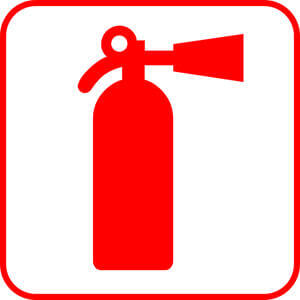Dear All: Three important documents were released at / during / around the World Economic Forum meeting that occurred this week in Davos.
First and foremost, we have the final report from DRIVE-AB. It’s a substantial document and you’ll need to set aside an afternoon to read it. As a way to get started, my 11 Sep 2017 blog post provided a good overview of DRIVE-AB’s conclusions and also offers a downloadable PowerPoint lecture containing the key ideas. In brief, the multidisciplinary DRIVE-AB team has:
- Created 3 blocks of insight: (1) a common language for measuring things like sustainable use, (2) models to predict emergence & spread of AMR, and (3) new HTA metrics for antibiotic value and
- Used these insights to propose four types of pragmatic and effective incentives
- Two types of Push incentives (Grants and a Pipeline coordination)
- Two types of Pull incentives (Market Entry Rewards and a Long-Term Continuity Model)
- Given us three key takeaway messages:
- It’s an ecosystem: We need Push and Pull. No single thing fixes it.
- Push: Given the weakness in the overall pipeline (see my 5 Jan 2018 blog summary of the recent pipeline analysis by Pew), DRIVE-AB suggests that current global Push funding (~$550m/year) should be increased ~50%.
- Pull: Detailed modeling by the DRIVE-AB team shows that a global market entry reward of ~$1b per new antibiotic would mean we’d have ~16-20 new novel antibiotics over the next 30 years rather than just the ~4 we’d currently expect.
That we’re making at least some progress on AMR-related work already is shown by the second report on our tour, 2016 R&D summary released by the AMR Industry Alliance. Per their progress report, Alliance companies invested > USD 2 billion during 2016 in R&D dedicated to a wide range of AMR-related products that include therapeutics, vaccines, diagnostics, and other preventative products. This is of course good to see, but the 48 traditional and the 32 non-traditional antibiotics in all phases of development as of Sep 2017 is certainly dwarfed by comparison with the more than 600 oncology drugs in Phase 2 or beyond (I could not find a good number for Phase 1).
The third report on our tour doesn’t speak to direct incentives but rather to the important role that planning for stewardship and access for new antibiotics will play in acceptance and implementation of meaningful Pull incentives. Provided by the Access to Medicines Foundation, the first AMR Benchmark Report shows that companies are working on priority pathogens, setting limits on antibiotic discharges, decoupling bonuses from sales volume, and tracking resistance. It’s not a surprise that the efforts are somewhat uneven across companies, but the trends are there and are encouraging.
Putting it all together, this figure from the DRIVE-AB reports shows that we’ve seen an impressive array of Push efforts implemented in the past two years:

But, you’ll immediately note that the Pull side of this figure is pretty lonely with only the GAIN Act in the United States keeping the box from being entirely empty.
The real question now is thus about global creation of strong Pull incentives and that’s where I hope that ripples from Davos will begin to drive this during 2018 and beyond. Every report reaches the same conclusion about the critical role of Pull incentives:
- DRIVE-AB: “The effective stimulation of antibiotic innovation requires a balanced combination of both “push” incentives (those designed to support R&D directly) and “pull” incentives (those designed to reward successful outcomes from R&D). Push incentives, such as grants, are important but not sufficient to fill the pipeline.“
- AMR Industry Alliance: “There was near-total consensus that progress on pull incentives is needed to change internal investment decisions. … Pull incentives must be sustainable and sufficient to stimulate R&D across the full R&D lifecycle, from discovery through development, to see an impactful long-term change on the pipeline of new products.”
- DRIVE-AB (again): “The G20 should work with member states and other like-minded countries to agree to implement and finance a market entry reward for a 20-year period including common sustainable use and equitable availability provisions.”
- AMR Industry Alliance (again): “Responding companies clearly articulated their current views of incentives, citing new and substantial pull incentives as the greatest need. In the words of one responding company, echoed by many others, ‘Now is the time to drive theoretical discussions to action.’“
- AMR Benchmark: “Governments and other funders must act to ensure the antimicrobial market can offer sufficient commercial incentive to keep pharmaceutical companies active in this space: for example by acting on commitments to develop additional and robust market-shaping mechanisms that support access objectives, stewardship, global supply and quality.”
- And even before this week, don’t forget the very similar conclusions on Pull incentives provided by TATFAR (the government-level Trans-Atlantic Task Force on Antimicrobial Resistance) in their 2017 paper on incentives, the UK AMR review in their May 2015 recommendations on incentives, and the Duke-Margolis team in their PAVE policy paper.
- (30 Jan 2018 update): Also of note is the 16 Nov 2017 multi-company-authored report from the BEAM Alliance that “emphasises key role of small and medium-sized enterprises (SMEs) as major innovators and presents a set of guidelines on how to more effectively reinforce and support antibacterial research and development (R&D) by SMEs.”

So, we now must work hard to make Pull happen and this requires us to focus on the pivotal role of antibiotics as the fire extinguishers of medicine.
Without antibiotics, there is no treatment for cancer, no ability to care for premies, hip replacements are high-risk ventures, and much more.
But, we don’t pay for fire extinguishers only when we use them — indeed, we much prefer to admire them and NOT use them … except in the knowledge that they are available. Similarly, we simply must stop paying for antibiotics on a per fire basis … this simply makes no sense and is not sustainable.
And while ~$1b per new antibiotic sounds like a lot of money, it’s important to look at other examples of cooperative international funding. The International Space Station had a cost in 2010 of $150b (and an astronaut/day cost of $7.5m). The CERN Large Hadron Collider cost ~9b to build and requires another $1b/yr to operate. So, it is possible!
I don’t exactly know how the needed Pull incentives will come about and there are still questions to be answered: Should all antibiotics get the same reward? If not, how do we created and adjudicate a suitable differential scale? Once you decide to provide a reward, how do you deliver it to the innovator? Different mechanisms would seem likely to be required in different territories (e.g., transferable exclusivity seems to make a lot of sense in the US due to its 100s of payors but single-payor countries would likely use a single central mechanism). And, how do you connect all this stewardship and access provisions in the developing world?
14 Apr 2018 update: Kevin Outterson has written an excellent Op-Ed in STAT News on these themes. Please check it out!
OK, so lots of questions! But, that fact that we’re talking about it so openly is a huge advance over where we were 5 years ago. It really takes my breath away when I think about how far we’ve come. Yes the next steps are hard, but the path is open … and the journey of a 1,000 miles does indeed begin with its first few steps! Push! Pull! Push! Pull! Heave! Ho! Onward!
At right, Dr. Doolittle’s mythical Pushmi-Pullyu.
All best wishes, –jr

John H. Rex, MD | Chief Medical Officer, F2G Ltd. | Expert-in-Residence, Wellcome Trust. Follow me on Twitter: @JohnRex_NewAbx. See past newsletters and subscribe for the future: https://13.43.35.2//blog-index.html
Upcoming meetings of interest to the AMR community:
- 12-14 Feb 2018 (Baltimore): ASM Biothreats Conference
- 28 Feb 2018 (Brussels): Deadline for responses to IMI2 Call 13 (Topic 3) on AMR diagnostics
- 11-16 Mar 2018 (Ventura Beach): Gordon Research Conference on Antibacterial Discovery
- 21-24 Apr 2018 (Madrid): ECCMID
- [NEW] 4-7 Jun 2018 (Boston): BIO (multiple AMR-focused sessions are expected)
- 7-11 Jun 2018 (Atlanta): ASM Microbe
- 22-27 Jul 2018 (Bryant University, Smithfield, RI): Gordon Research Conference on Drug Resistance for Cancer, Infectious Disease and Agriculture
- [Don’t miss this one] 4-7 Sep 2018 ESCMID-ASM Conference (#3) on Drug Development for AMR (Lisbon, Portugal) (initial flyer)
- [UPDATED with link for 2018 program] 6-14 Oct 2018 International Course on Antibiotics and Resistance (ICARe, Les Pensières, Annecy, France)